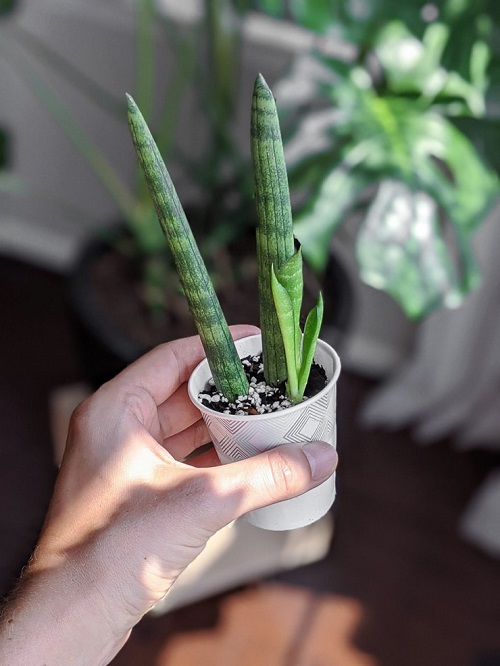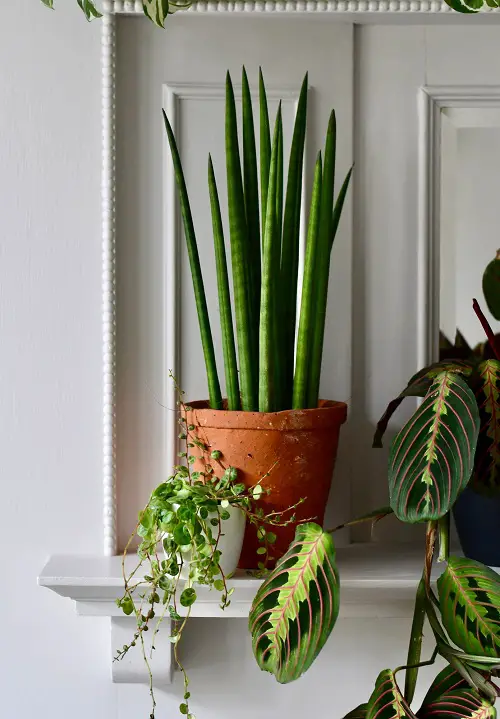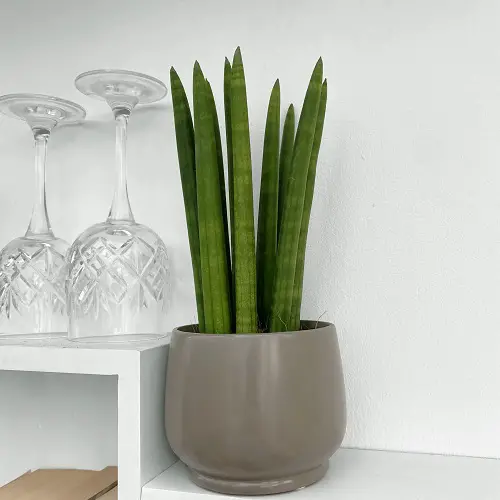Cylindrical Snake Plant – A quirky contender in the botanical world that stands out with its long and rounded leaves!

The Cylindrical Snake Plant brings a twist to its common counterpart with its elongated and round leaves – a great choice for tabletops!
Cylindrical Snake Plant Details
Native to Angola, Sansevieria cylindrica, has tall, cylindrical leaves ,unlike the flat leaves commonly associated with other plants in its genus. Its foliage is dark green with light striping, adding an element of texture and visual interest to any room.
Indoors, given the right growing conditions, this plant can achieve a height of 3-4 feet. You can display it on shelves, tabletops, windowsills, or any place of your choice! This plant is nearly indestructible and can tolerate a wide range of lighting conditions.
Propagating Cylindrical Snake Plant

The plant grows best from division – to start the process, carefully remove the parent plant from its pot, and examine the root ball to identify the natural divisions.
Using a sharp, sterilized knife, cut through the roots to get individual sections having roots. Once done, place each division into a new pot filled with well-draining soil.
Water lightly, and keep it in a warm, well-lit area but out of direct sunlight. It will take a few weeks for the divisions to establish new roots.
Best Pot Size for Cylindrical Snake Plant
You can start the plant in a 6-8-inch pot, which will be good for 2-3 years. Depending on the growth and spread, re-pot it into one size bigger pot than the old one.
Requirements for Growing Cylindrical Snake Plant

Sunlight
Cylindrical Snake Plant performs best in bright, indirect light. Direct sunlight, particularly during peak afternoon hours, can scorch the leaves, so it’s advisable to place it in a location where it receives filtered sunlight.
Best Potting Mix
It prefers a well-draining soil mix, making cactus or succulent mixes an ideal choice. You can also add perlite or sand to the regular potting mix to improve drainage further.
Watering
This plant is highly drought-tolerant, requiring minimal watering. Water only when the top 1-2 inches of the soil feel dry to the touch.
Overwatering can lead to root rot, so it’s better to err on the side of underwatering.
Temperature Range
Sansevieria cylindrica thrives in a temperature range of 70 F to 90 F (21-32 C). It is less tolerant of cold drafts and sudden temperature changes.
Make sure it is not exposed to temperatures lower than 60 F (15 C) for a longer duration of time.
Cylindrical Snake Plant Care

Fertilizer
A balanced, water-soluble fertilizer is suitable for the Cylindrical Snake Plant. Apply the fertilizer every 4-6 weeks after diluting it to 1/2 of its strength.
Also, avoid feeding the plant in winters.
Pruning Details
Sansevieria cylindrica requires minimal pruning. Just snip away damaged, discolored, or diseased leaves from time to time. This helps the plant direct its energy towards new growth and keeps it looking its best.
Pests
The most common pests you might encounter are mealybugs and spider mites. Both of these can be treated with insecticidal soap or neem oil. Make sure to isolate the affected plant from other houseplants to prevent the pests from spreading.
Diseases
Root rot is the most common disease due to overwatering. Fungal and bacterial leaf spot diseases can occasionally affect the plant. Prevention is the best cure – provide good air circulation and avoid overhead watering.


